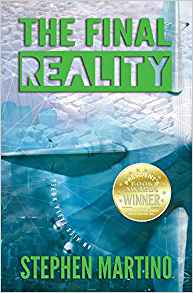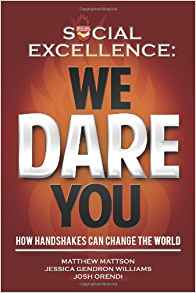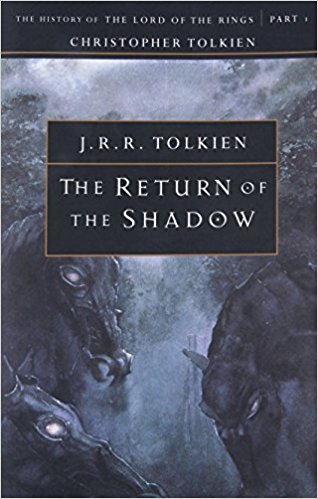Over the years, I have reviewed the first and second books in author Stephen Martino’s Alex Pella trilogy. For information on the two books that predate the one reviewed here, I encourage you to go back and read those two reviews or – better yet – go read the books themselves.

The Final Reality is a captivating, fast-paced action/thriller that pits two geniuses against each other with the fate of the world in the balance. If you have not read the first two books in the Alex Pella trilogy, then you are missing out on one of the most powerful displays of what this world’s future may look like under unchecked authoritarian regimes. What is frightening is that the early footprints of these regimes are readily evident in today’s geopolitical landscape. National debts rising out of control, a desire to disrupt the spread of free thought and free speech, being instantly shut down when trying to keep massive corporate and/or governmental structures in check – all of these are the building blocks of the world that The Final Reality‘s two geniuses inhabit and fight to control. On the one hand, you have Julius Windsor – the would-be good guy if everyone only just listened to him and his brilliance. On the other hand, you have Alexander Pella – the three-steps-ahead foil to Windsor’s every move. If you have read the first two novels in the series, then you know who these two men really are (genetically, that is) and knowing that bit of information makes every interaction between these two that much more exhilarating.
What Martino does better than anyone else in this genre is integrate actual legend and folklore along with biblical narrative in a post-contemporary vision of the future. In The Final Reality, you can expect to read a high action thriller that includes Bible-based references on the location of the Creation story’s Garden of Eden in the same scene that you will read about fantastical flying airships from millennia ago – that’s right… millennia! And that was one of the fun parts of reading this book – being brought (again) into this world that Martino creates that has layers upon layers of fascinating stories yet to be told.
Even though The Final Reality is the final novel in the Alex Pella series, the world that is created through the end of this story is one that is ripe for new legends to be built on, new heroes to emerge, and new tales to tell. I would not be surprised to see Martino return to this world in the future to tell the story of the new/old continent Mu or to talk about the devastation wrought by the shifting tectonic plates (another utterly fascinating element of the story, for those of you keeping track). This is one of the most brilliant aspects of Martino’s writing; namely, that he writes a story wherein millions of people around the world are lost in major global catastrophes related to shifting tectonic plates and yet he is able to keep the focus of the story on Windsor and Pella and their epic struggle for dominance in this new world. Taking massive, global struggles for power and embodying them in a battle between two individuals makes for a great story.
Here’s an official trailer for the novel:
Once again, Martino brings his gripping style of storytelling to a world that includes romance, humor, intelligent banter, and glimpses of the science fiction-fueled future earth that may yet come to pass. If you are heading in to some vacation time and you want a fun, page-turning thrill ride to keep you busy (and maybe give you some insight into what the world may become), then The Final Reality is the book for you.
 It is not that I did not begin reading the book. Rather, it is that I stopped reading new books and reviewing them on this blog for a number of reasons. However, after rediscovering this book on my Nook a few weeks ago, I recommitted myself to reading it and I am so glad that I did. Years ago, I remember thinking, “What could I possibly get out of this book that is going to be worth the effort?” Years later (now), I am glad to have read a thoughtful, yet fun travel diary prepared by Adam as he spent one year traveling to different parts of the world. What ultimately drew me into the book was the way that Adam told his story as he went from one country to the next. His story is written in a manner of new discovery – finding out about the peculiarities of new cultures through the eyes of someone experiencing them for the first time.
It is not that I did not begin reading the book. Rather, it is that I stopped reading new books and reviewing them on this blog for a number of reasons. However, after rediscovering this book on my Nook a few weeks ago, I recommitted myself to reading it and I am so glad that I did. Years ago, I remember thinking, “What could I possibly get out of this book that is going to be worth the effort?” Years later (now), I am glad to have read a thoughtful, yet fun travel diary prepared by Adam as he spent one year traveling to different parts of the world. What ultimately drew me into the book was the way that Adam told his story as he went from one country to the next. His story is written in a manner of new discovery – finding out about the peculiarities of new cultures through the eyes of someone experiencing them for the first time. This is not to insinuate that Dreyer is incorrect in any of his suggestions, recommendations, or rules. Rather, this is to suggest that contemporary English has become so out of whack with the basic rules that we sometimes write in a piecemeal method akin to how Dr. Frankenstein built his monster (shout out to anyone who has read Dreyer’s English).
This is not to insinuate that Dreyer is incorrect in any of his suggestions, recommendations, or rules. Rather, this is to suggest that contemporary English has become so out of whack with the basic rules that we sometimes write in a piecemeal method akin to how Dr. Frankenstein built his monster (shout out to anyone who has read Dreyer’s English). For example, I stopped at the
For example, I stopped at the  Putting my own, initially incorrect approach to reading this book aside, if you are looking for a deep, highly detailed dive into the formation of Tolkien’s Middle-Earth, then this is it. The Return of the Shadow brings you to the very first drafts of The Lord of the Rings – to a world where the familiar foursome of hobbits that are the stars of the trilogy are not Frodo, Sam, Merry, and Pippin. Instead, the reader is treated to Faramond, Frodo, Merry, Odo, Folco, and a host of other hobbits that never made their way into starring roles in the final trilogy. The Return of the Shadow also takes its readers into the thought process behind Tolkien’s creation of iconic characters like Treebeard and Strider. Would you believe that in their first incarnations these well-known players in The Lord of the Rings were much different? For example, in Tolkien’s first draft, Treebeard was working in the service of Sauron. And Strider? He began as the hobbit Peregrin! And these characters are set in a Middle-Earth that includes a forgotten elvish land named Hollin, a Rohan that is still filled with horse lords – but whom are also working in the service of Sauron, and where Gondor is known as Ond.
Putting my own, initially incorrect approach to reading this book aside, if you are looking for a deep, highly detailed dive into the formation of Tolkien’s Middle-Earth, then this is it. The Return of the Shadow brings you to the very first drafts of The Lord of the Rings – to a world where the familiar foursome of hobbits that are the stars of the trilogy are not Frodo, Sam, Merry, and Pippin. Instead, the reader is treated to Faramond, Frodo, Merry, Odo, Folco, and a host of other hobbits that never made their way into starring roles in the final trilogy. The Return of the Shadow also takes its readers into the thought process behind Tolkien’s creation of iconic characters like Treebeard and Strider. Would you believe that in their first incarnations these well-known players in The Lord of the Rings were much different? For example, in Tolkien’s first draft, Treebeard was working in the service of Sauron. And Strider? He began as the hobbit Peregrin! And these characters are set in a Middle-Earth that includes a forgotten elvish land named Hollin, a Rohan that is still filled with horse lords – but whom are also working in the service of Sauron, and where Gondor is known as Ond.